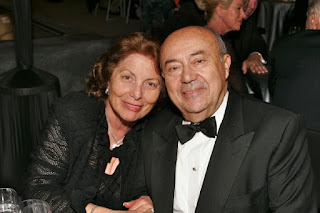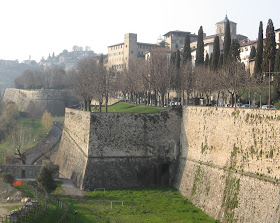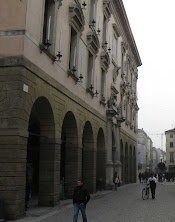Academic explained the mystery of falling in love
 |
| Francesco Alberoni wrote more than 25 books, some published in 20 languages |
Alberoni was successful with the short books he wrote on the themes of love, good and evil, and ethics, and his work explored the dynamics of social relations. In 1979 he produced a bestseller, Innamoramento e amore (Falling in Love).
He was the descendant of a famous Cardinal from Piacenza, Giulio Alberoni, who was active in European diplomatic circles in the 17th century.
But his own upbringing was during the Fascist era in Italy and while he studied at the Liceo Scientifico in Piacenza, he claims he was subjected to military-style discipline.
Alberoni moved to Pavia to study medicine, where he met the Capuchin friar, Agostino Gemelli, who encouraged him to pursue his interest in the study of social behaviour.
His first book, L’Elite senza potere - Elite without Power - was published in 1963. Alberoni then published a further three books before he completed the work that was to set out the foundations for his own sociological ideas, Movimento e istituzione - Movement and Institution - which was published in 1977.This was one of the first books on the sociological analysis of movements and it explored how leadership, ideas and communication all come together to fuel the birth of different movements.
 |
| Innamoramento e amore became a bestseller in Italy |
His most famous book, Falling in Love, maintains that the experience of falling in love is in essence the nascent state, or "ignition state", of a collective movement which is made up exclusively of two people.
In exploring the subject, Alberoni used the language of love stories rather than psychological or sociological jargon, which may explain the book’s popularity. Falling in Love has since been translated into 20 languages and, after ten editions, is still in print in Italy.
The sociologist was one of just a few regular front page writers for Corriere della Sera, who published his columns from 1973 to 2011.
Meanwhile, Alberoni had a distinguished academic career, holding professorships at a number of universities in Italy and Europe.
He wrote more than 25 books about sociology and has also had collections of his essays published, despite not having enjoyed his own early education during the Fascist era. He has also said he did not have much access to books when he was young and therefore started to enjoy the pleasure of reading himself, only when he was a teenager.
Alberoni was at one time a board member of RAI, the Italian state television network, and a president of the Centro Sperimentale Cinematografia, the Italian national film school based in Rome.
He had three children with his first wife, Vincenza Pugliese. He later had a fourth child with his partner, Laura Bonin. He named this child Giulio after his famous ancestor. In 1988, he was married for the second time, to another sociologist, Rosa Giannetta.
Alberoni died of kidney disease in Milan in 2023, aged 93.
 |
| Borgonovo Val Tidone's 's town hall is house in a repurposed Sforza castle |
Borgonovo Val Tidone, where Alberoni was born, is a town of just under 8,000 residents in Emilia-Romagna, located about 160km (99 miles) northwest of Bologna and about 20km (12 miles) west of Piacenza. Nestling at the feet of the Apennines, the town is situated not far from the river Tidone, which supposedly owes its name to the Carthagian leader, Hannibal. Legend says that the Carthaginian leader, as a gesture of gratitude for crossing the river, threw a ring in the water with the words ti dono - I give you. Once controlled by the Sforza family of Milan, Borgonovo Val Tidone is the home of Chisöla, a type of focaccia bread made with pork rind, which is the highlight of the town’s annual gastronomic fair each September.
 |
| Piacenza's Piazza Cavalli is notable for its two equestrian statues by Francesco Mochi |
Piacenza is the first major city along the route of the Via Emilia, the Roman road that connected Piacenza with the Adriatic resort of Rimini. Parma, some 66km (41 miles) along the route, is the next, followed by Reggio Emilia, Modena and Bologna. The main square in Piacenza is named Piazza Cavalli because of its two bronze equestrian monuments featuring Alexander Farnese, Duke of Parma and his son Ranuccio I Farnese, Duke of Parma, who succeeded him. The statues are masterpieces by the sculptor Francesco Mochi. The city is situated between the River Po and the Apennines, with Milan just over 72km (45 miles) to the northwest. Piacenza Cathedral, built in 1122, is a good example of northern Italian Romanesque architecture. Among many notable people, Piacenza is the birthplace of Giorgio Armani, founder of the eponymous fashion house.
Also on this day:
1493: The birth of Eleonora Gonzaga, Duchess of Urbino
1842: The birth of painter Giovanni Boldini
1855: The birth of poet Giovanni Pascoli
1990: The death of architect Giovanni Michelucci
New Year’s Eve - Festa di San Silvestro




.jpg)


_-_facciata_1_2019-06-23.jpg)



.jpg)








